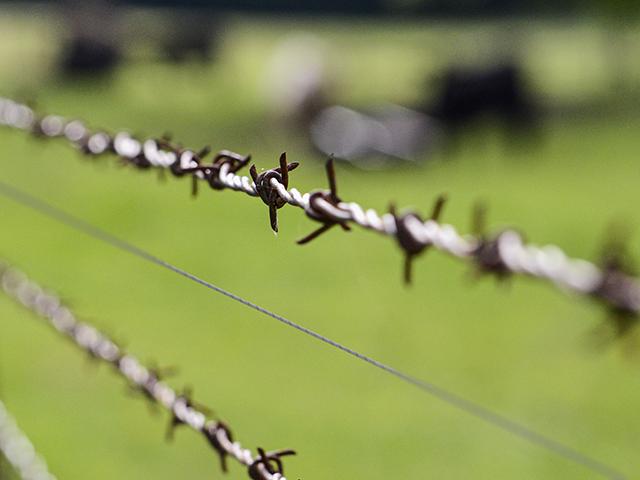Ask the Vet
Good Fences, Better Neighbors
READER: We have a neighbor who does nothing to manage his cattle. He bought an older, Brangus-type bull at a sale barn this past summer. That bull has jumped the fence several times. I'm worried about trichomoniasis (trich) infecting our cow herd. Should we test our cows? Is there anything we can do to protect our herd?
DR. McMILLAN: I am sure you've heard the one about how good fences make better neighbors, but some bulls just do not have much respect for a fence.
If you haven't already done it, I would recommend adding "hot" wires to the fence. Most recommendations call for voltage at least 2 to 3 kilovolts (kV) for cattle, but for a bull, I really like 5 kV or more. This may help solve future problems, but it doesn't address your current concerns.
Let's talk about trich testing for cows. It is very difficult, and my understanding as to why is that even culturing cervical fluids is very unreliable. While a positive test means the cow is infected, a negative test does not mean much. If that bull was in the herd, he probably should be cultured -- maybe as many as three times -- at two-week intervals. Testing the bull that jumped the fence might give you the best answer diagnostically speaking, yet it might not even be possible.
I will climb back onto one of my soapboxes and point out that this is another reason for a controlled calving season. Trich causes early embryonic death. Early-term abortions when the calving season is spread out and the bulls are always with the cows can be hard to track. But, if you have a 60- to 90-day breeding season, and you're preg-checking cows 45 to 60 days after the bulls come out, when those pregnancy rates take a nosedive, you'll know there's a reason for immediate concern.
P[L1] D[0x0] M[300x250] OOP[F] ADUNIT[] T[]
That said, there are lots of reasons for a poor conception rate. Trich is certainly one reason, but at the end of the day, no matter the cause, immediate and aggressive action to turn things around can save your season.
READER: We have an old barn cat that is getting pretty crippled. It's a lot worse this winter than ever before. Is there anything we can give her to help?
DR. McMILLAN: She most likely has osteoarthritis or degenerative joint disease. If she hasn't seen a veterinarian recently, get her in for a checkup so her condition can be fully assessed.
Cats are very different than dogs and often get treated differently when it comes time for us to get them medical attention, largely because they are so independent. Cats are even better than dogs at hiding problems, but they still absolutely need regular veterinary care to live their best and longest lives.
Cats are sensitive to many drugs humans can safely take for osteoarthritis. Ibuprofen (Advil), naproxen (Aleve) and especially acetaminophen (Tylenol) can be deadly to cats. The NSAIDs (nonsteroidal anti-inflammatory drugs) we use in dogs like carprofen (Rimadyl), Deramaxx and Previcox can't be used in cats. One NSAID, Onsior, can be used short term in cats.
At the clinic, we have had good success using an Adequan injection in cats. This is only approved for dogs and horses, so it is an off-label use. That's why you will need to discuss this option with your veterinarian. We also give some cat-specific glucosamine supplements that we've found can be helpful in some cases.
Lastly, you should be aware that there is something new that just came out this year. Called "Solensia," it is a monoclonal antibody injection for osteoarthritis. It seems to be very safe and effective. We have been pleased with it in the cats who have used it, and I think it could be a game changer for treatment of chronic arthritis in cats.
READERS TALK BACK:
FG from Iowa wrote regarding landscaping screens, saying he's found that both arborvitae and spruce make excellent screens, as well as pines. He added: "In the drought of 2012, almost all of our 30-foot arborvitae died. They are shallow rooted. Red cedar are more resilient but carry a fungus that you don't want if you have apple trees. Some people call arborvitae white cedar, they look similar. The wood is rot resistant, and we get about 100 fenceposts out of our dead arborvitae."
-- Please contact your veterinarian with questions pertaining to the health of your herd. Every operation is unique, and the information in this column does not pertain to all situations. This is not intended as medical advice but is purely for informational purposes.
-- Write Dr. Ken McMillan at Ask The Vet, 2204 Lakeshore Dr., Suite 415, Birmingham, AL 35209, or email vet@progressivefarmer.com
[PF_0323]
(c) Copyright 2023 DTN, LLC. All rights reserved.




